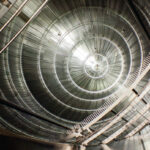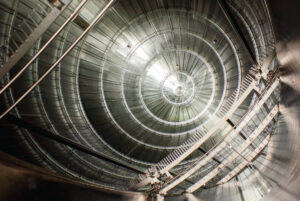
New KATRIN results

The 24-m-long main spectrometer of the KATRIN experiment is operated under ultrahigh vacuum. Credits: Michael Zacher/ KATRIN Collaboration
The KATRIN collaboration has succeeded in determining a new upper limit of 0.45 eV/c² for the neutrino mass. “The new result is a milestone on the way to the measurement goal of KATRIN,” says Kathrin Valerius, co-spokesperson of the KATRIN collaboration and professor at the Karlsruhe Institute of Technology.
Neutrinos play a key role both in the universe and in the world of fundamental particles, as they connect cosmic and subatomic scales: As remnants of the Big Bang, neutrinos still permeate our cosmos in large numbers – they are billions of times more abundant than atoms. As “cosmic architects”, they have helped shape the development of the universe. Their small but non-vanishing rest mass goes beyond the established standard model of elementary particle physics. It has not yet been possible to measure the neutrino mass directly in the laboratory.
The world-leading KArlsruhe TRItium Neutrino experiment (KATRIN) measures the neutrino mass using a direct and model-independent method. The KATRIN measurement is based on the work of W. Pauli and E. Fermi, who showed almost 100 years ago that precise beta decay spectroscopy can make the tiny neutrino mass visible. KATRIN analyzes the decay of the hydrogen isotope tritium into ³He in order to determine the neutrino mass from the energy distribution of the beta electrons. To do this, KATRIN needs a powerful tritium source operated at the Tritium Laboratory Karlsruhe (TLK). Measurement operations have been running since 2019 and will continue until the end of 2025.
More information
- Science publication: Direct neutrino-mass measurement based on 259 days of KATRIN data
- KATRIN website: https://www.katrin.kit.edu/1271.php



